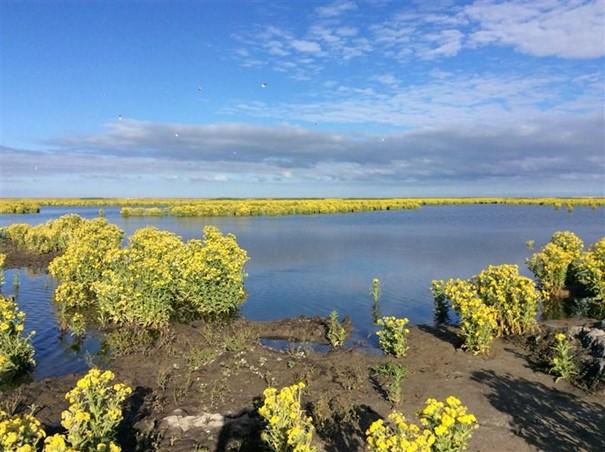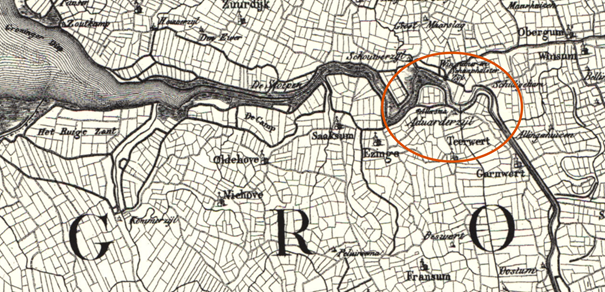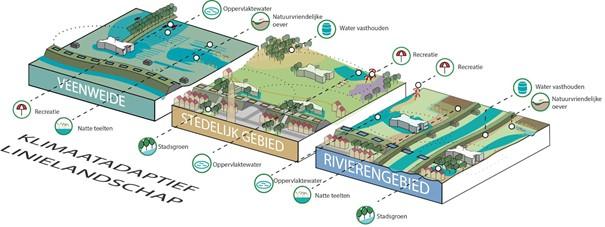Arjan Conijn
Our surrounding landscapes are the result of human interaction with the natural environment, with water, soil, and geomorphological reliefs. Especially water and the man-made structures that interact with it have influenced the landscapes we now know. With industrialization, specialists inserted new technical systems of dikes, mills, and pumping stations that became a key driver in the design of our environment. As humans reshaped and controlled the natural environment more prominently, their knowledge and engagement with the natural system diminished. . In this blue paper and in his daily work at engineering firm Witteveen + Bos, Arjan Conijn argues to include the cultural history of a place in the first situational analysis of a spatial project.

The earth’s natural resources have been exploited to an extent that degrades soils and demands too much water use. This diminishes the future possibilities to live the luxury life we live today. Recently more and more people recognize how mankind has exploited the earth’s resources. Technical engineers are starting to embrace concepts such as building with nature and sustainable design principles. As an engineer working in spatial development like dike enforcements I argue that an analysis of water heritage needs to be a design principle.
Many state-of-the-art engineers are now convinced that we should follow natural systems in our design. Unfortunately they forget that mankind has damaged the natural system already to a significant extent. It is easy to argue that no natural circumstances can be found in a country like the Netherlands, where every square metre has been designed by man. The ecological system in the Dutch Markermeer, for example, is functioning poorly because of a decrease of nutrients and lack of shallow waters and floodplain areas (figure 1). The nutrients, which are normally provided by the floodplains, are decreasing because of intensive sewage treatment. The shallow waters and floodplains have been turned into polders (e.g. the Flevopolder) for housing and agriculture.

It is practically impossible to understand the natural system without taking into account the historical human interference on this natural system. Therefore, it is relevant to know how this natural system has been influenced, how it has been designed, but also why it was designed and how these changes affect the current water systems to this day. An example of this complex interplay of human interference and natural adaptation is the water system in the Northern part of the Netherlands. The sandy lands of Drenthe used to drain via the Fivel into the Wadden Sea. After dikes were built along this stream, further drainage went via the Grote Tjariet. Over the years, however, sedimentation severely increased in this stream. This was partly caused by increasing erosion on the sandy lands, as a result of deforestation on behalf of the cultivation of these lands. As a result of this increased sedimentation, drainage diminished and new canals had to be dug. In the 14th century the local water board developed the Winsumerzijl, a sluice (figure 2). When this did not provide enough draining capacity, another sluice (Schaphalsterzijl) was built. These sluices tell the story of how humans adjusted the natural system in the area.
Engineers and politicians rearranged the water systems in this area changing the natural conditions. together they constitute cultural history. To identify and understand them, planners and designers need to be able to recognize natural conditions and all kinds of human interventions: of water canals, but also of sluices and pumping stations. Understanding the natural water system does not tell the complete story of an area’s development. Human interferences might have rearranged the water system and therefore redrawn the starting point from which a contemporary issue should be looked at. It is therefore necessary to study the interaction between humans and the natural system, in order to create a functioning sustainable system for the future.
An example of how cultural heritage can be included in solving contemporary issues comes from the Hollandse Waterlinies (Holland Water Defense Lines). This military defense line, built during the 19th century, consists of inundation fields designed to make it impossible for armies to cross. This defense line, a UNESCO World Heritage site, was built in accordance with the landscape. The wet areas contained more and bigger inundation fields than the sandy hills, which had more fortifications, especially around the city of Utrecht, and more south towards the river Lek, the inundation fields where part of a more complex water system as a result of the fluctuating water levels in the river.
Nowadays one of the big challenges in this area is climate adaptation. The specific issues vary among the various landscape types. The formerly low areas demand more water storage, whereas the sandy hills have to provide cool recreational space for the inhabitants of Utrecht in hot periods. Along the river, more water storage is essential. Since the Waterlinie has been designed in accordance with the landscape, it can be used as a framework to solve climate adaptation issues.

By using the waterlinie structure as a framework for climate adaptation it mutually benefits the climate issues as strengthening cultural heritage (figure 3, see also Verschuure-Stuip 2020). Knowledge of the cultural heritage and its water systems provides the opportunity for historical inundation fields to be used as water storage, for cooling down in historical (military) tree structures and broadening of the existing complex water system around the rivers.
Altogether, it is essential in contemporary spatial design to include knowledge on cultural heritage and execute a proper analysis of the natural and cultural interaction early in the project. The historical landscape structures often relate to a great extent to the natural circumstances and therefore provide valuable insights on how to establish harmonious interaction between natural and cultural influences in our surrounding landscape.
Acknowledgement
The Blue Papers is a series of thought-provoking short essays on water. Authors have been invited by the platform Water Values: Connecting Past, Present & Future, an initiative of ICOMOS-NL, TU Delft and University of Groningen to argue the importance of heritage and a cultural approach within water related challenges. The papers were edited by PCF’s Carola Hein and Hilde Sennema. Dr. Arjan Conijn wrote a dissertation on historical flood management in the landscape and now works as an expert landscape and water heritage at engineering firm Witteveen+Bos. In his daily practice he deals with projects like dike enforcement of Koehool-Lauwersmeer, positioning the added value of water heritage and mapping the climate chances of the Hollandse Waterlinies.
References
Verschuure-Stuip G. (2020) Hold the Line: The transformation of the New Dutch Waterline and the Future Possibilities of Heritage. In: Hein C. (eds) Adaptive Strategies for Water Heritage. Springer, Cham. https://doi.org/10.1007/978-3-030-00268-8_13
